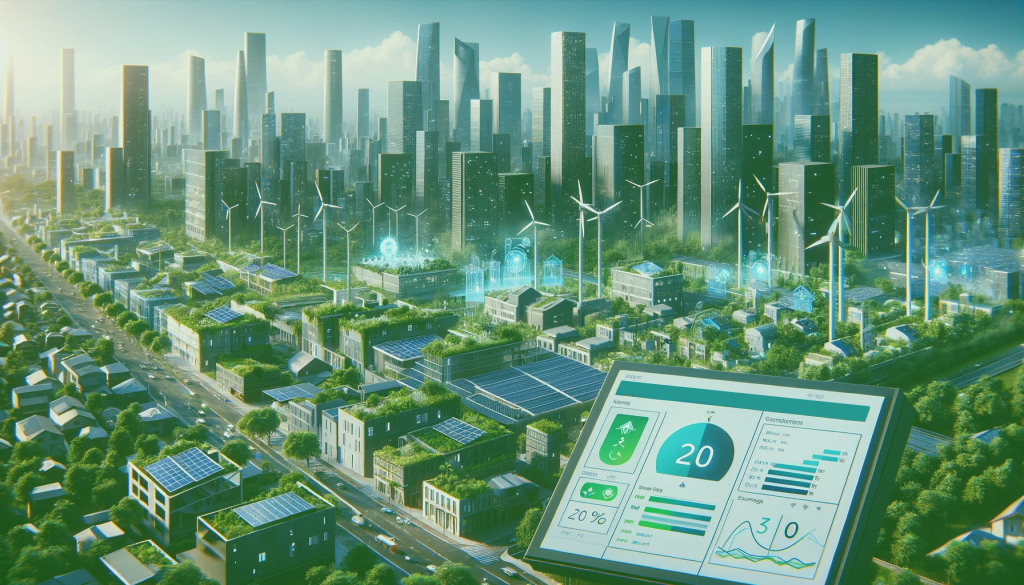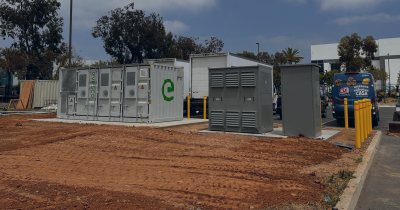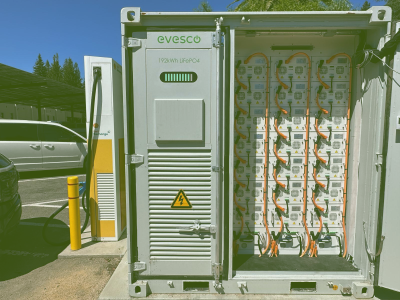Demand Side Response (DSR): A Comprehensive Guide

Integrating renewable sources in today’s energy landscape challenges balancing the supply and demand of electricity. To address this, Demand Side Response, often referred to as Demand Response or DSR, has emerged as a revolutionary approach to energy management. Demand Side Response means the increasing, decreasing, or shifting of electricity usage by businesses in response to signals received from the grid. By doing this, businesses contribute to grid stability and enhance energy efficiency. This comprehensive guide explores the importance of Demand Side Response (DSR), its various services, benefits, participation opportunities, and the outlook for this critical element in transitioning to a sustainable energy future.
The Importance of Demand Side Response
The variable nature of solar and wind energy poses a challenge in maintaining grid stability. DSR is pivotal in addressing this challenge by balancing supply and demand. By adjusting electricity usage based on grid demands, Demand response ensures a stable and efficient energy grid. This strategic energy storage application has gained recognition globally and is essential in shifting towards a sustainable energy future.

Progress of Demand Response in Various Markets
Several regions globally have made notable progress in integrating Demand Side Response into their energy systems:
European Union
The European Union (EU) has approved a comprehensive action plan for digitizing the energy system. As part of this plan, the EU aims to establish requirements and procedures to facilitate data access for demand response. This initiative will create a connected and responsive energy network, enabling more effective management of energy resources.
United States
In 2021, there was a peak demand savings potential of 29 GW across demand response programs in the United States. A total of 10 million customers, including residential, commercial, and industrial, were enrolled, resulting in an overall energy savings of 1154 GWh.
Australia
In Australia, South Australia has taken a proactive approach to foster Demand Side Response. The new Technical Regulator Guideline mandates that air conditioners installed after July 1, 2023, must be demand response ready. By integrating DSR capabilities into everyday appliances, South Australia aims to enhance grid stability and energy efficiency.
These are just some examples of regions making progress with Demand Side Response, many other locations are taking strides and introducing initiatives to enable DSR.
Examples of Demand Side Response Services
Demand Side Response services are vital in maintaining grid stability and efficiency. Here are four notable examples of DSR services and how they work:
1. Firm Frequency Response (FFR)
FFR helps balance the grid’s frequency by adjusting electricity usage in response to supply-demand imbalances. Businesses reduce or increase their electricity usage to help balance supply and demand, ensuring the grid’s frequency remains within the required levels. FFR is crucial for immediate response to frequency changes triggered by sudden imbalances between supply and demand.
2. Capacity Market
The Capacity Market ensures grid reliability by compensating participants for providing electricity or reducing demand during peak periods. Participants are paid to guarantee they can provide electricity or reduce their demand when the grid is under stress, typically during high-demand periods. This mechanism ensures the necessary level of electricity supply during peak demand, maintaining grid reliability.
3. Short-Term Operating Reserve (STOR)
STOR offers additional power or demand reduction at short notice, which is crucial in unexpected situations like power plant failures. Participants in STOR provide additional power or reduce demand, typically at short notice. This reserve service is activated in unforeseen situations to ensure grid reliability and avoid power outages.
4. Peak Charge Avoidance
This DSR service involves reducing energy consumption during times of peak pricing to avoid higher energy costs. It is particularly beneficial for businesses located in regions with variable energy tariffs. Businesses can minimize costs and optimize their energy consumption during peak pricing periods by strategically managing energy usage. Each DSR service is integral to a responsive and sustainable energy system, offering unique benefits and supporting the integration of renewable energy sources
Benefits of Demand Side Response
Demand Side Response programs offer various benefits, including financial incentives, environmental impact reduction, enhanced grid reliability, operational efficiency, and improved market competitiveness.
Financial Incentives and Savings
By responding to grid demands, businesses can generate new revenue streams. They achieve this by reducing consumption during peak times or shifting it to off-peak periods. Active participation in Demand Response programs often reduces energy bills. Payments received from DSR program operators generate revenue and act as financial incentives for participation. Revenues can vary depending on the DSR program.
Environmental Impact Reduction
DSR optimizes energy usage and aids in integrating renewable sources, contributing to a lower carbon footprint. By reducing the environmental impact of energy consumption, businesses can align their operations with sustainability goals.
Enhanced Grid Reliability
Demand Side Response stabilizes the power grid during peak demand periods or unexpected outages. By managing demand, DSR prevents overloading, reduces the risk of blackouts, and ensures a more reliable electricity supply.
Operational Efficiency
Participating in Demand Response encourages businesses to analyze and optimize their energy consumption patterns. This leads to more efficient use of energy resources, potential reductions in overall energy costs, and a streamlined operational process that can boost productivity.
Market Competitiveness
Engaging in Demand Side Response enhances a company’s reputation as a forward-thinking and environmentally responsible entity. Commitment to innovative energy management can serve as a differentiator in the market, appealing to customers and stakeholders who prioritize sustainability.
These benefits reinforce the value of DSR in contributing to a sustainable, efficient, and reliable energy system while also providing tangible advantages to participating businesses.
Participation in Demand Side Response Programs
Participation in Demand Response programs is typically open to large industrial and commercial entities with significant energy usage. Examples include manufacturing plants, data centers, and large retailers. However, the scope is expanding to include smaller businesses and even residential users in some cases.
To find DSR programs in their area, businesses can follow these steps:
- Research Local Regulations and Market Opportunities – Understanding local energy market policies and structures is crucial.
- Contact Energy Suppliers or Grid Operators – These entities often have information on DSR programs and can guide businesses’ participation.
- Consult with DSR Aggregators or Providers – Specialized organizations can connect businesses with suitable DSR programs and offer tailored solutions.
- Explore Government and Industry Resources – Many governments and industry associations provide resources and information on DSR opportunities.
Finding the right program involves understanding local energy markets, regulations, and available opportunities. Consultation with energy experts or specialized providers can also help identify suitable DSR programs.
Utilizing Battery Energy Storage for Demand Response
Battery Energy Storage Systems (BESS) are revolutionizing Demand Side Response by providing a more flexible, efficient, and responsive approach to energy management. Integrating battery storage into DSR strategies empowers businesses to enhance their energy efficiency and financial gains.
How Battery Storage Elevates Demand Response
- Peak Shaving – BESS allows businesses to store energy during off-peak hours and use it during peak demand, reducing reliance on the grid and lowering energy costs.
- Increased Grid Stability – By discharging stored energy during periods of high demand, battery systems help stabilize the grid, which is crucial for integrating renewable sources.
- Fast Response – Batteries offer a rapid response to grid signals, providing instantaneous power when needed, a key advantage in Demand Response programs.
- Revenue Generation – Participation in DSR with battery storage opens up new avenues for income through grid services like frequency regulation and capacity markets.
Implementing an energy storage application like DSR requires businesses to consider capacity needs, budget, and existing infrastructure. Working with energy storage specialists like EVESCO to design and implement a BESS system aligned with DSR objectives is crucial. Battery storage is poised to play a significant role in a sustainable and resilient energy future, driven by technological advancements and the increasing need for grid flexibility.

The Future Outlook for Demand Side Response
The future of Demand Side Response is driven by growth and innovation, supported by new technologies and expanding residential participation. Several key developments are shaping the future of DSR Electric Vehicle-to-Grid (V2G) Charging is gaining traction in countries like France, Italy, the UK, the Netherlands, and the US, where electric vehicles contribute to grid stability by returning electricity back to the grid. In the UK, a program focusing on energy smart appliances and electric vehicle charge points aims to test interoperable demand response through smart meters and energy management systems.. Virtual Power Plants (VPPs) are also gaining global momentum, digitally connecting and managing distributed energy resources. Furthermore, residential DSR programs are being explored and expanded in various regions, with notable initiatives by Tata Power in India and Itochu in Japan, emphasizing peak reduction and the use of residential energy storage systems. These innovative developments reflect a dynamic shift towards more integrated, technology-driven solutions that enhance grid efficiency and sustainability.
Demand Side Response (DSR) represents a revolutionary approach to energy management, contributing to grid stability and energy efficiency. Its importance in the global shift towards a sustainable energy future is evident. Businesses of all sizes can participate in DSR programs, with opportunities expanding beyond large industrial entities. The integration of Battery Energy Storage Systems further enhances the capabilities of DSR. Demand Side Response is a cornerstone in the journey toward a sustainable, efficient, and reliable energy future.



